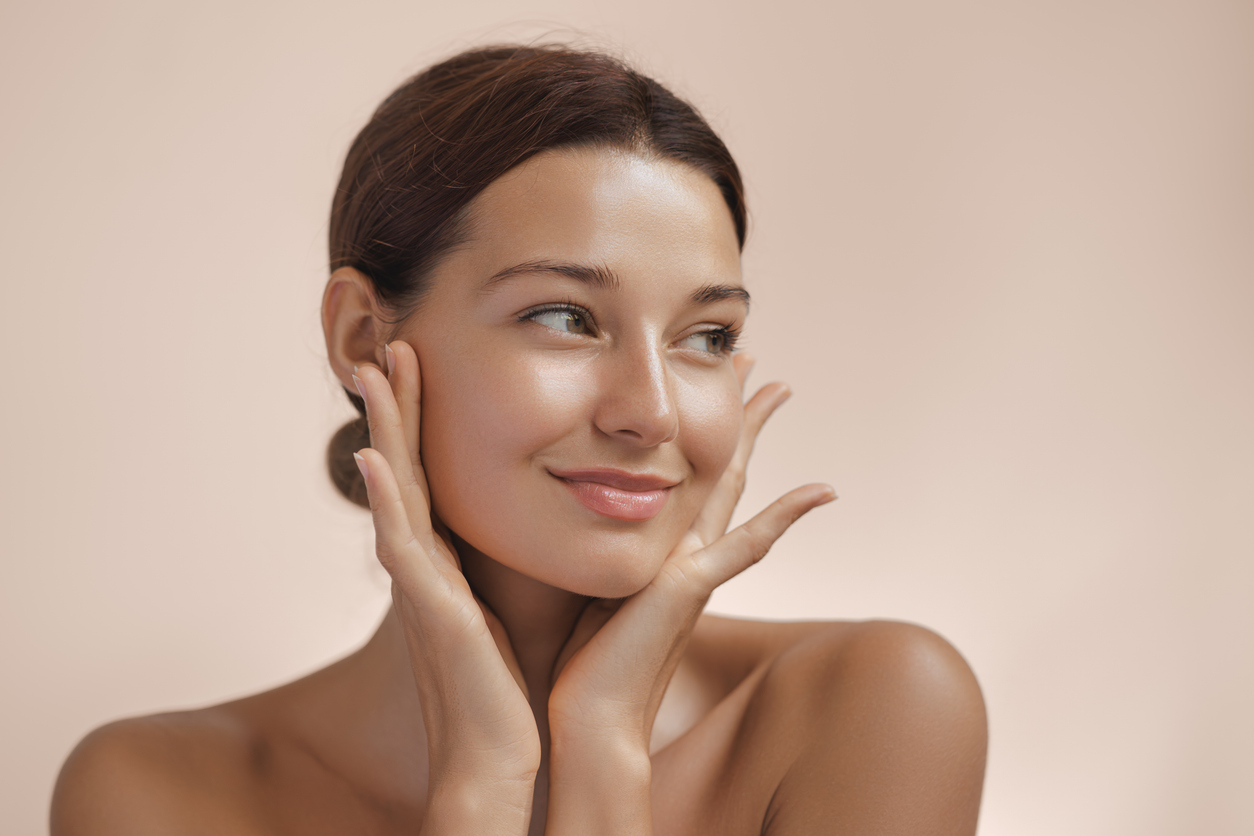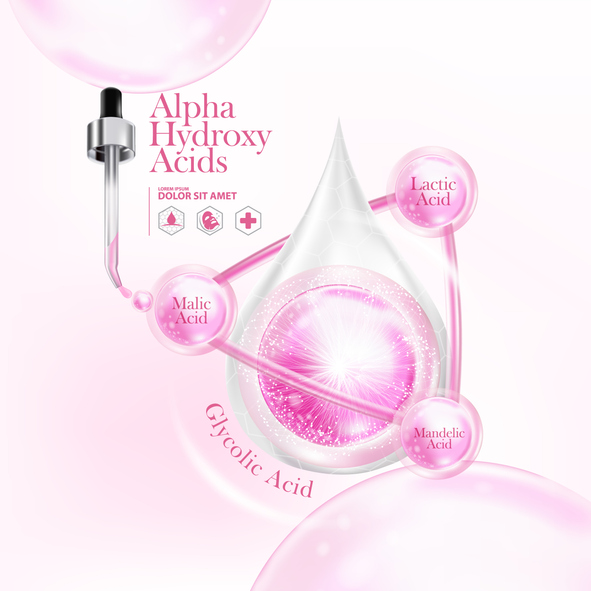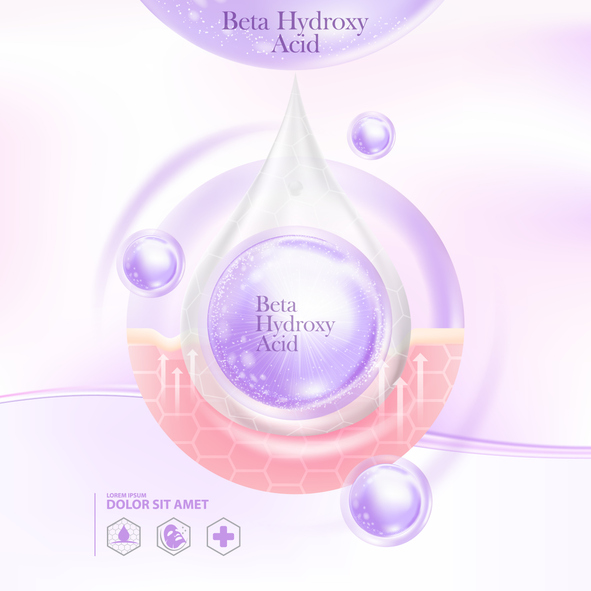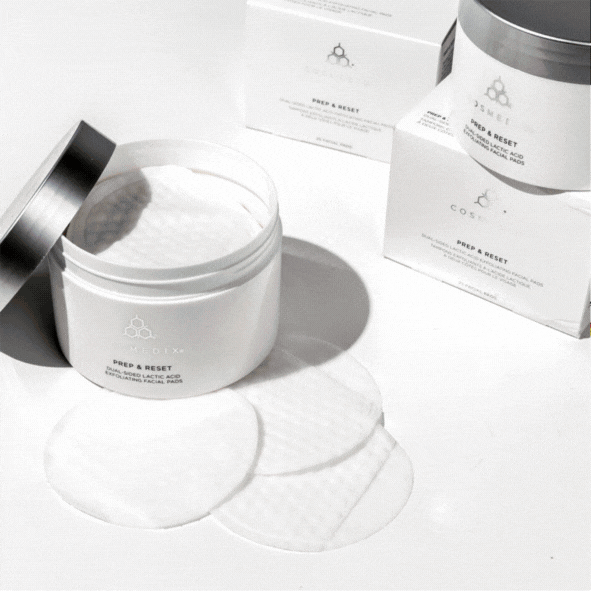You know all about exfoliating scrubs, but what about chemical exfoliants? Here’s everything you need to know about the world of facial acids.
Acid is glorious, but we’re not talking about the hallucination-inducing psychedelic variety. In the world of skincare, acids come in a variety of forms and work wonders for the skin if you know which ones do what.

The word “acid” conjures up all kinds of fears about burning and harming your skin instead of helping it. Those days, happily, are behind us, and there are several great topical acids that deliver results in a short period of time WITHOUT requiring a doctor’s prescription.
So, if you have dull, flaky, lackluster skin which is common any time of year, especially after soaking up the summer sun, or are waging a war against whiteheads and battling blackheads, read on. This singular step can make a huge difference with minimal effort.
Alpha Hydroxy Acid (AHAs)

AHAs exfoliate the surface of the skin, so if you’re dealing with textural issues, acne scarring, wrinkles, and rough patches, an AHA can help. AHAs are water soluble and are naturally derived from fruit, soured milk, and sugar cane. When used properly, AHAs slough off corneocytes (aka dead skin cells) and make room for healthy new skin. Glycolic acid and lactic acid are the most widely recognized AHAs, but there are a few others, so here’s a quick primer along with key recommendations about usage from Internationally Renowned Facial Plastic Surgeon & Neck Surgeon Dr. Kay Durairaj.
- Glycolic Acid is considered the strongest AHA and is derived from sugar cane. “This acid is perfect when treating acne. It exfoliates, helps unclog pores, prevents breakouts, and lightens scars over time.”
- Mandelic Acid, a very gentle AHA, comes from bitter almonds and “is perfect for sensitive skin and reducing melasma. It is gentle and treats redness and uneven texture without causing pain or irritation.”
- Lactic Acid, found in milk, has hydrating properties and is also very gentle. “It is highly recommended for aging skin [since it] hydrates and reduces fine lines and wrinkles, aiding skin texture and firmness for a smoother, more youthful look.”
- Second generation AHAs known as polyhydroxy acids (PHAs), like gluconolactone and lactobionic acid, “are a safer choice” for people with sensitive or dry skin. PHA molecules are larger than AHA molecules, and that means they work primarily on the uppermost layer of skin and are less likely to cause irritation due to reduced penetration.
Clinical studies have also found them to be helpful for patients with skin conditions like atopic dermatitis or rosacea. They keep the skin hydrated “while still giving you exfoliation benefits.” And “they don’t increase sun sensitivity as much as AHAs.”
Tips and Recommendations for Using AHAs
AHAs come in varying strengths, from barely noticeable formulations to hard-core strengths that take months to work into your routine regularly. If you’re just starting out, look for a low percentage and monitor how your skin responds, so you can increase usage over time.
Dr. Kay also recommends exercising caution, especially if you have Fitzpatrick type III to VI skin. “If you have a darker skin tone, you need to be extra careful because of the risk of post-inflammatory hyperpigmentation (PIH), which is more common in darker skin.” Even though PIH can also be treated, it’s best “to consult with a dermatologist to get personalized advice and prevent complications” from the outset. And remember to use sunscreen daily because AHAs can increase photosensitivity.
Beta Hydroxy Acid (BHAs)

If your pores need deep cleaning, a BHA like salicylic acid, is the ticket. This oil soluble acid works like Drano for your pores, cutting through oil and dirt, eliminating clogs, banishing blackheads, and moisturizing simultaneously. Dr. Kay says, “The target audience of this acid would be teenagers, women experiencing hormonal acne, and others with acne-prone or oily skin who need a deep-cleaning exfoliant.”
There’s also a gentler salicylic acid derivative on the market known as lipohydroxy acid (LHA). If you have sensitive skin or need a gentle but effective exfoliant to address skin texture without irritation, an LHA is a good option.
3 Ways to Incorporate Both Types of Acids Into Your Routine
Once you understand how each acid works, you can incorporate them both into your skincare routine to maximize benefits on the surface of the skin as well as below it. The key is to use the acids in the right order. Dr. Kay recommends using BHA first and allowing it to absorb for a few minutes before applying an AHA on top. You can also alternate usage, using your AHA one night and a BHA the next. “This gives your skin a break and reduces the risk of irritation and pain. You can [also] use one in the morning and the other at night… and never forget your SPF in the morning because AHAs and BHAs can make your skin more sensitive to the sun.”
Need a few suggestions for effective acids that the Beautytap community has tested and enjoyed? Here you go:

- Cosmedix Prep & Reset Dual-Sided Lactic Acid Exfoliating Facial Pads (4.8 stars)
- REN Ready Steady Glow AHA Tonic (4.7 stars)
- Versed Weekend Glow Daily Brightening Toner (4.7 stars)
- SNP Lab PHA 5 Toner (4.5 stars)
Loading...